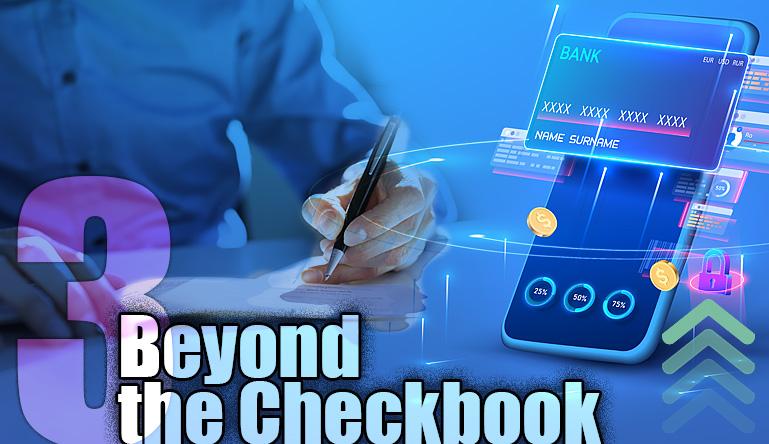-
 Vice President of Sales, Catalis Payments
Vice President of Sales, Catalis PaymentsA passionate sales leader, he builds dynamic teams, driving customer success via strategic growth, innovation, and global relationships.
View all posts
This is part three of our “Beyond the Checkbook: Driving the Digital Government Payment Revolution” series, exploring how digital innovation is transforming government payment systems. Stay tuned for more insights about security, fraud prevention, accessibility, modernization, and real-world success stories from agencies across the country.
Digital Tools Improve Cash Flow and Public Service
In today’s digital-first world, speed matters. Citizens expect real-time access to services, and vendors want fast, transparent transactions. Yet many government agencies still rely on paper-based processes that delay payments, complicate accounting, and slow down operations.
The good news? Shifting to digital payment processing for local government doesn’t just accelerate transactions; it transforms entire financial ecosystems. From improving vendor relations to boosting citizen satisfaction, faster payments pave the way for smarter, more responsive government.
The Cost of Delays
Government agencies process countless payments every week: tax refunds, permit fees, payroll, vendor disbursements, and utility credits. When those payments depend on paper checks, each transaction is vulnerable to slow mail delivery, manual handling errors, and delayed fund availability.
These delays impact more than just the recipient. They hinder internal operations by creating uncertainty in cash flow, tying up staff time with reconciliation, and leading to reactive rather than proactive fiscal management.
Many public agencies also underestimate the downstream impact of slow payments. When refunds or vendor payments are delayed, it often triggers additional calls to customer service, follow-up emails, or even in-person visits, all of which consume staff time and inflate operational costs. These touchpoints not only increase workload but also create unnecessary friction in citizen interactions.
With digital systems that support instant confirmations, payment tracking, and automated status updates, agencies can proactively reduce confusion and complaints. Citizens gain peace of mind knowing their payment went through. Vendors don’t have to chase departments for updates. And frontline staff are freed up to focus on higher-value services instead of fielding inquiries.
A report from the IRS estimated that switching from paper to electronic refunds could save over $1 per transaction and speed up delivery by weeks. State and local agencies can achieve the same results, with digitized payments enabling faster turnarounds and fewer administrative headaches.
The Value of Faster, Digital-First Payments
Government operations run on predictable cycles. Taxes are due. Invoices come in. Refunds go out. But outdated systems often turn simple tasks into extended processes. By contrast, cloud-based government payment platforms streamline workflows and allow agencies to move funds with far greater agility.
Benefits include:
- Shorter settlement times: Digital transactions settle within hours or days, not weeks
- Improved cash forecasting: Real-time visibility into inflows and outflows makes budget planning easier
- Greater reliability: Electronic transfers eliminate guesswork around check delivery or deposit times
- Reduced costs: Fewer printing, postage, and processing expenses free up resources for higher priorities
Modern e-government payment services also support digital receipts and audit trails so agencies can track and confirm every transaction instantly, no more waiting for bank statements or returned checks.
Unlocking Cash Flow Agility
Faster payments don’t just make citizens and vendors happy; they give governments more control over their finances. With instant visibility into payment status and settlement timing, finance teams can better manage reserves, reduce borrowing needs, and plan ahead with confidence.
For example, local governments that use real-time payment reporting for municipalities can reconcile incoming tax payments and outgoing refunds more efficiently, improving end-of-month close rates and reducing errors. This agility is critical during peak collection seasons, emergency response scenarios, or capital project cycles.
Additionally, shifting to automated payment reconciliation for agencies reduces time spent chasing errors, freeing up staff for strategic initiatives. When reconciliations are automatic and digital, agencies can spot anomalies, double-check allocations, and generate reports at the click of a button.
Real-World Impact on Service Delivery
Imagine a resident paying a license renewal online at 10 p.m. and receiving confirmation before the office opens the next morning. Or a small business vendor getting paid within 48 hours of completing a public project. These types of fast, reliable interactions change how people view government and how governments function internally.
Speed also reinforces equity in service delivery. When all residents, regardless of income, location, or banking status, can rely on timely payments, it builds public trust. Digital options like direct deposit, mobile payments, and PayPal ensure that government services remain accessible and dependable across the board.
Delayed disbursements, on the other hand, create confusion and mistrust. Citizens might question whether their payment was received. Vendors might hold off on future bids due to long reimbursement timelines. These gaps can weaken community relationships and stall progress on important projects.
With multi-channel payment processing for agencies, governments can offer more convenient ways to pay and get paid, reducing barriers and increasing satisfaction. Digital systems also reduce foot traffic and call volume, lightening the load on front-line staff and improving day-to-day efficiency.
Building a Scalable Foundation for Growth
Speed and flexibility are especially critical for governments experiencing growth, infrastructure expansion, or surges in service demand. Digital platforms that support modular payment solutions for diverse government use cases allow agencies to scale without adding staff or complexity.
Whether it’s integrating digital wallet payments for local government services, launching a new self-service payment portal for government, or supporting pay-by-bank options, agencies can configure services that meet their community’s evolving needs, without overhauling their systems.
Faster payments also support stronger emergency response. Whether disbursing emergency relief funds, issuing vendor payments after a storm cleanup, or providing refunds for canceled public programs, speed and agility make a measurable difference. Legacy systems can slow down these time-sensitive transactions when communities can least afford delays.
By contrast, agencies with digital-first payment infrastructure can pivot quickly. Funds can be routed electronically to individuals, vendors, or departments with minimal administrative overhead. Built-in reporting and analytics tools also give leadership real-time insights into fund distribution, helping agencies maintain compliance and public accountability in moments that matter most.
Modern enterprise payment gateways for public sector agencies offer everything from online portals to in-office kiosks, enabling rapid, flexible deployment based on need.
Advancing Government Payments with Confidence
Catalis Payments offers secure online payment processing for government entities through a single, scalable solution built for modern finance. Our cloud-based government payment platform helps agencies move money faster, reduce operational costs, and improve transparency, without sacrificing security or compliance.
With integrated support for court payment processing software, digital payments for permits, licenses, and taxes, and government payment platforms supporting all transaction types, Catalis empowers public agencies to deliver payments as efficiently as private industry.
Discover how Catalis can help your agency modernize payment operations. Explore our full range of digital government solutions today.
This is part three of our “Beyond the Checkbook” blog series on digital payment transformation in government. Follow along as we publish more insights each week.


